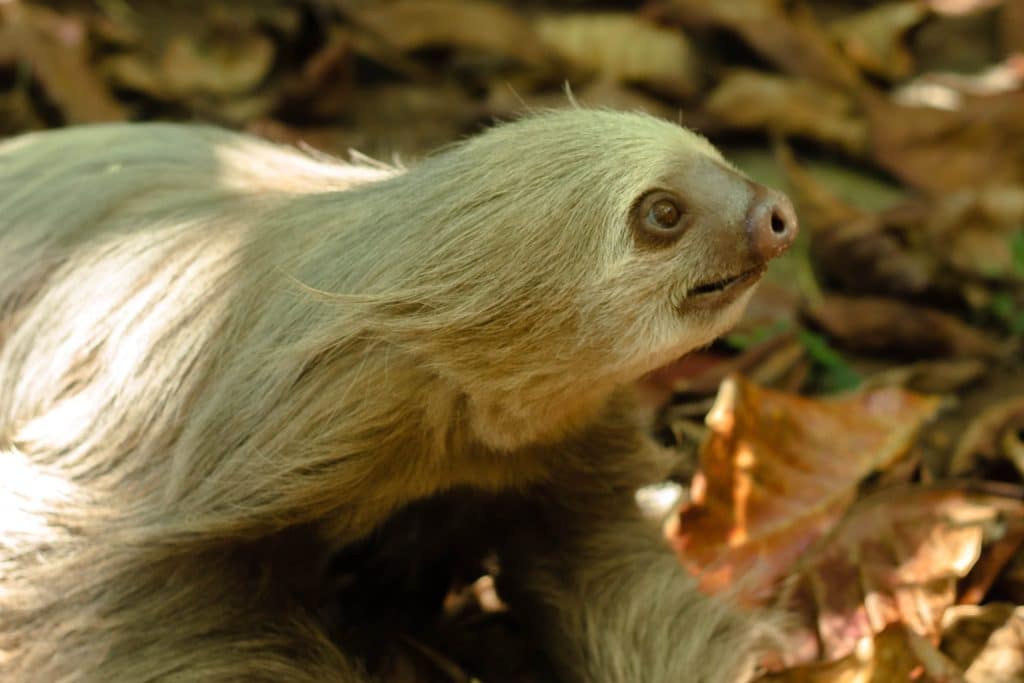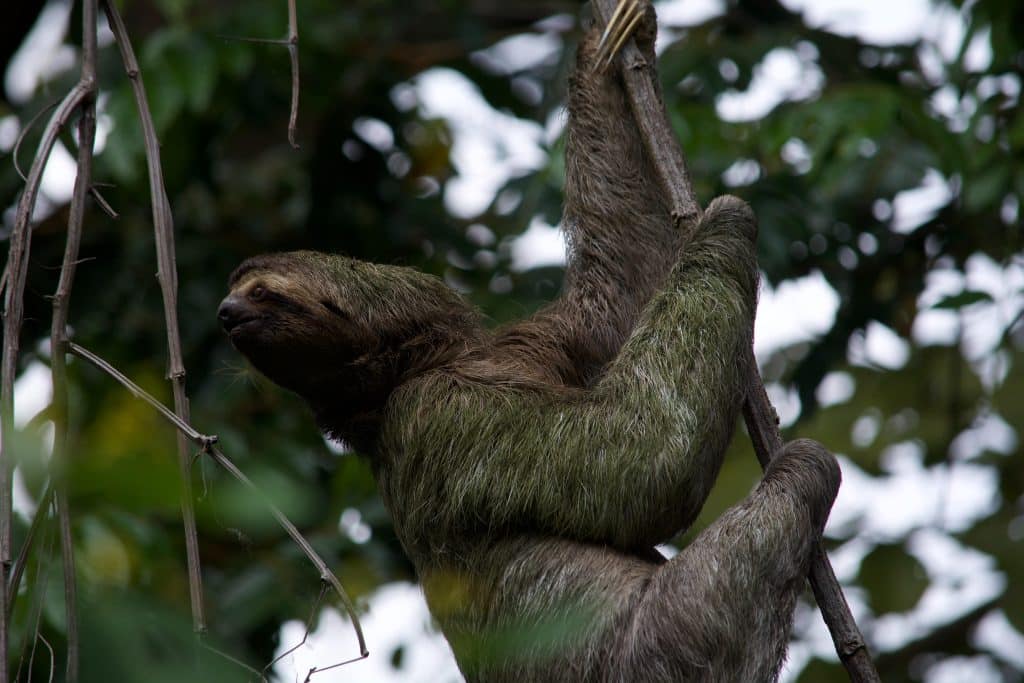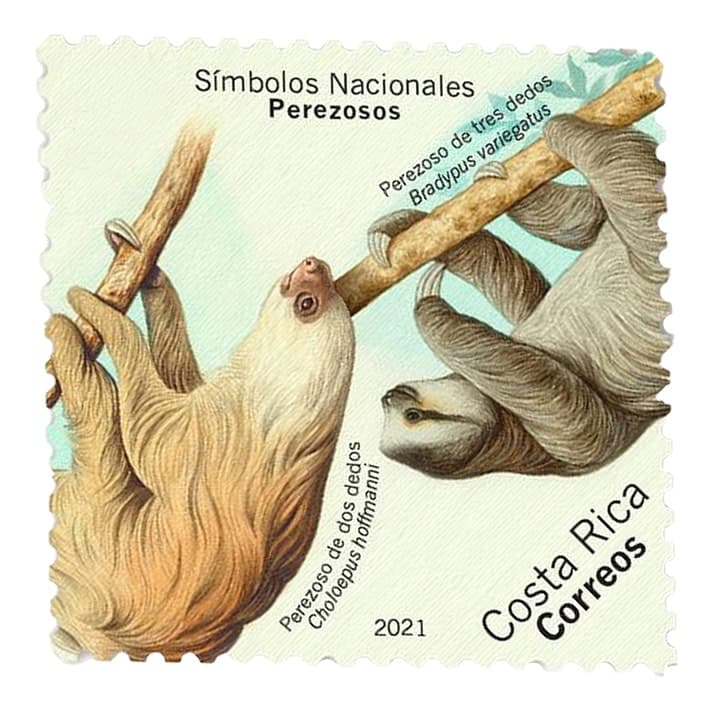- Mon – Fri : 08.00 – 17.00
- +506 2236 5226
- +506 8439 4040
- www.bella-aventura.com
- reiseplanung@bella-aventura.com
- Registration Form
- Author: Alice Sickenberger
- Category: Nature & Sustainability
- No Comments
Introduction:
If you come to Costa Rica, you want to see a sloth in the wild with your own eyes. If you visit the right places, it’s not complicated. Sloths are not called sloths for anything because they don’t move much. Two different species can be seen in Costa Rica. The two-fingered sloth and the three-fingered sloth. The sloths weigh between 2 and 11 kg and can o 30 years.


How and where do sloths live?
The sloth’s habitat is the tropical rainforest; the animals are exclusively found in the forests of South and Central America. There they spend their lives mainly hanging on the treetops. To get around, they shimmy along the branches. They rarely come down to the ground. The main reason is to do their business, which happens about once a week. Two-fingered sloths prefer to stay in the tree. Even mating and giving birth takes place in the tree.
The hairline of sloths is on the belly. This is perfectly adapted to their way of life because it allows rainwater to run off their bodies efficiently, and the animals dry quickly after a tropical rain shower.
Three-fingered sloths feed almost exclusively on leaves on the trees. The two-fingered sloth sometimes reaches for fruits or even insects and small animals. The metabolism of sloths is so slow that they need very little food. Saving energy is also the reason for their slow-motion life.
Sloths cannot absorb all the ingredients they need through their leaves. To solve the problem, nature has come up with a unique solution. Moths live in the sloth’s fur. They produce the nitrogen and phosphorus compounds essential for the sloth and promote algae growth in the animal’s fur. As a result, the sloth can take in all the vital substances by consuming the algae.

The enemies of the sloth.
As long as the sloths are in the protection of the treetop, they live pretty safely. Because their fur is covered with algae and they hardly move, it is difficult for their enemies to spot them. However, if this should happen, they can defend themselves well with powerful blows from their long claws.
However, as soon as they leave the tree, it becomes hazardous for them. During their short time on the ground, about every second animal falls victim to its predators. These include Snakes, birds of prey, and wild cats.
The biggest threat to the sloths, however, is us humans. Primarily through rainforest clearing or the illegal sale of pets, we endanger the population of animals. Two of the total six species are already endangered or threatened with extinction.
Where can you spot sloths in Costa Rica?
Sloths can be found almost everywhere in Costa Rica, which is 50 percent forest. To discover them, you only have to enter a rainforest and, at best, know which trees the animals favor, although they sometimes even dwell in the green areas of hotels. Costa Rican sloths are mostly three-fingered sloths. They are ubiquitous in Cahuita National Park and along the southern coast of the Caribbean Sea to Manzanillo. In addition, the Tortuguero and Caño Negro National Parks, as well as the private nature reserve Ecocentro Danaus, which also contributes a lot to the education of the people in environmental protection, are perfect places to observe sloths.
You will surely encounter sloths at the Sloth Sanctuary of Costa Rica in Cahuita, a sanctuary for injured animals. A guided tour shows some of the sloths that could no longer survive in the wild and have been given a safe home here. There are also animals in this sanctuary that only need to get well and resume their lives in the rainforest, but they are primarily kept away from visitors.
From time to time, the facility is criticized because the sloths are kept in small cages, so the species’ justice is questioned. But the private project is not supported by the state and does not have the financial means to provide better accommodation for the sloths, which are maimed, blind, or otherwise unable to survive on their own.
Admission to Sloth Sanctuary costs $30 and includes a guided tour of the sanctuary and a canoe trip through a nearby rainforest.
Contents:
Recent post:


Personalise your trip now!
About Blog:
Travel with friends Blog is the most updated digital travel magazine of the Costa Rican market, property of the travel agency Bella Aventura Costa Rica S.A., where we publish weekly the best recommendations, destinations, and experiences you cannot miss during your trip to Costa Rica. Be encouraged to travel with friends who will advise you to have the best experience.

